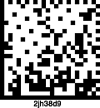Scaling up a decentralized offline patient ID generation and matching algorithm to accelerate universal health coverage: Insights from a literature review and health facility survey in Nigeria
- PMID: 36158996
- PMCID: PMC9489848
- DOI: 10.3389/fdgth.2022.985337
Scaling up a decentralized offline patient ID generation and matching algorithm to accelerate universal health coverage: Insights from a literature review and health facility survey in Nigeria
Abstract
Background: Quality of health service delivery data remains sub-optimal in many Low and middle-income countries (LMICs) despite over a decade of progress in digitization and Health Management Information Systems (HMIS) improvements. Identifying everyone residing in a country utilizing universal civil registration and/or national unique identification number systems especially for vulnerable patients seeking care within the care continuum is an essential part of pursuing universal health coverage (UHC). Many different strategies or candidate digital technologies exist for uniquely identifying and tracking patients within a health system, and the different strategies also have their advantages and trade-offs. The recent approval of Decentralized identifier (DID) core specification by World Wide Web Consortium (W3C) heralds the search for consensus on standard interoperable DID methods.
Objective: This paper aims to: (1) assess how candidate Patient Identification Systems fit the digital Patient ID desirable attributes framework in literature; and (2) use insights from Nigeria to propose the scale-up of an offline, interoperable decentralized Patient ID generation and a matching model for addressing network reliability challenges of centralized electronic registries in LMICs.
Methods: We combined: (i) systematic review of the literature to identify the characteristics of leading candidates for Patient ID systems, with (ii) review of policies and (iii) quantitative survey of 14 general hospitals in Nigeria's Federal Capital Territory to understand the model(s) of patient ID strategies currently implemented by public hospitals.
Results: Evidence from the literature review and quantitative survey showed that no current Patient ID strategy in Nigeria simultaneously meets the six attributes of uniqueness, unchanging, uncontroversial, inexpensive, ubiquitous, and uncomplicated required for ensuring the reliability of unique patient identification systems and of the HMIS more generally.
Conclusions: The findings are used to propose a model of algorithms for universal-offline Patient ID generation and matching models that is cost effective and can be easily scaled-up throughout Nigeria. The prototype has promise for generating and validating a universally unique Patient ID given a set of patient characteristics without a central rigid authority. The model can also help to fast-track the implementation of a Master Patient Index (MPI) and interoperability of existing digital health platforms in LMICs.
Keywords: Master Patient Index (MPI); Universal Patient Identifier (UPI); client registry; decentralised identifier; digital health; health information exchange; interoperability; patient matching.
© 2022 Chukwu, Ekong and Garg.
Conflict of interest statement
The authors declare that the research was conducted in the absence of any commercial or financial relationships that could be construed as a potential conflict of interest.
Figures






References
-
- World Health Organization. WHO eHealth Resolution. Geneva (2005). Available from: http://www.who.int/healthacademy/news/en/
-
- Africa S. Seventy-first World Health Assembly A71/A/CONF./1 Agenda item 12.4 Digital health. (2018). p. 7–10. Available from: http://apps.who.int/gb/ebwha/pdf_files/WHA71/A71_ACONF1-en.pdf
-
- WHO. Global Strategy on Digital Health 2020–2024. (2020). Available from: https://extranet.who.int/dataform/upload/surveys/183439/files/Draft Glob... - PubMed
-
- USAID. USAID’s Digital Strategy. (2020) [cited 2021 Mar 18]. Available from: https://www.usaid.gov/usaid-digital-strategy
LinkOut - more resources
Full Text Sources

